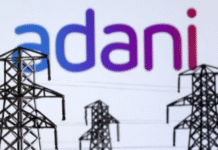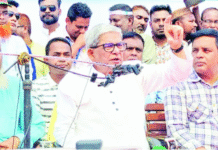Crops and the silence of the state
 Here are some recent headlines of the country with the fastest growing bracket of wealthy people: ‘Bumper aman crop, farmers crestfallen,’ Bumper harvest of winter vegetables, farmers frustrated,’ ‘Bumper watermelon yield, farmers in dismay,’ ‘Farmers at a loss with bumper cauliflower harvest,’ ‘No fair prices, farmers struggle with aush crop,’ ‘Farmers in a dilemma with boro crop,’ ‘Farmer sets fire to rice field,’ and ‘Tomatoes fed to cows as prices too low.’
Here are some recent headlines of the country with the fastest growing bracket of wealthy people: ‘Bumper aman crop, farmers crestfallen,’ Bumper harvest of winter vegetables, farmers frustrated,’ ‘Bumper watermelon yield, farmers in dismay,’ ‘Farmers at a loss with bumper cauliflower harvest,’ ‘No fair prices, farmers struggle with aush crop,’ ‘Farmers in a dilemma with boro crop,’ ‘Farmer sets fire to rice field,’ and ‘Tomatoes fed to cows as prices too low.’
There are bumper crops everywhere in the aush, aman, IRRI, boro rice fields. There are bumper harvests of potatoes, potol, melon, watermelon, everything. But the farmers’ fate never changes. It is downhill all the way.
Down the ages farmers have suffered from uncertainty and insecurity. They face the risk of natural calamities like cyclones, rain, hail, pest attacks and so on. Then they are held hostage by the market. That’s the life of a farmer – filled with trouble and threats.
Then again, aren’t farmers in a dilemma all over the world? Don’t the prices of produce rise and fall in Europe and America too? Aren’t the corn fields of the Midwest in America flooded from time to time? Doesn’t the frost in extreme cold spells wipe out grape and strawberry harvests? Agriculture is risky everywhere. The only difference is that measures are taken at a state level in those countries to deal with the reality of such risks. Farmers are given adequate subsidies and incentives to grow their produce amidst these risks. They are assisted in all sorts of ways, like grants, crop insurance, risk coverage, price loss coverage, direct cash payments and such.
Our ministers declare we are surpassing Canada, America and Europe, but they don’t take note of the unbelievable state protection offered to the corn, potato, wheat, soybean growers of those countries. In America, the farmers can apply for around 60 different types of state assistance from when they plant the seeds to when they sell their produce. They get disaster assistance during storms and floods. They are compensated if market rates fall or their harvest is less than expected. The state even helps them out if they want to stock their crops.
The average income of the farmer families in Europe and America is double that of the non-farmer families. They even joke about it, saying that Rockefeller receives the highest subsidy in America and Queen Elizabeth in England. The bottom line is, whether you are a queen or a farmer or a banker, the state will provide you with incentives, insurance and other costs if you invest in agriculture.
Every cow in Europe receives an annual allowance of 70,000 taka, that is, 2.5 dollars a day. That means European cows earn more per day than half the people around the world. There’s another joke that European cows can spend leisurely extended vacations in the Caribbean isles with the amount of money they earn! Journalist P Sainath once asked an India agro-organiser what was the dream of an Indian farmer. The reply came: to be reborn as a cow in England in the next life.
Aware of the simple fact that life cannot go on, civilisations cannot survive without the basics – rice, wheat, potatoes – developed countries have built up a farmer-friendly system to protect this vulnerable production chain. Up till 2012, Canada would buy each and every grain of wheat from the farmers through the national wheat board. The South Korean government, from 1970 till 2005, would buy rice at higher prices from the growers and sell it at lower prices to the people. The farmer-friendly initiatives may be market-oriented due to pressure from the World Trade Organisation, but South Korea still pays the farmers compensation through deficiency payments if there is a gap between the target price and the market price. Even in Punjab, Haryana and a few other states of India, the state governments procure rice, wheat, mustard and such crops from the farmers directly at good prices by means of the minimum support price system.
Bangladesh’s farmers do not want subsidy. They do not want loans of 370 billion to be written off either. All they want is fair prices. They want to be freed from the grasp of the middle men and rice mill owners. They want the guarantee of being able to sell their paddy at the government procurement centres at good prices. There is a target of 20 million tonnes of boro this year, yet the government is only going to buy 1.25 million tonnes, that too not all directly from the farmers. In fact, 1.1 million tones will be procured from the mills. Who benefits if the rice is bought from the mills rather than from the farmers directly?
The minister said, it is difficult to select farmers from all around the country. Why is it difficult? Why is there no list of farmers? Some say that there is no space in the government warehouses. Why? In a country awash with development, why hasn’t the government built up the capacity for food grain storage? Last year there was a bumper boro harvest, so why was 200,000 tonnes imported this year? Why are trucks and trucks of rice still entering through the border?
The farmers say that when they go with their grains to the government warehouses, they are told that the paddy is damp and can’t be stored. Yet the middle men buy that same rice from them and stock it in the same warehouses. The farmers toil hard to grow the grain. They spend money to hire vans to carry the paddy to the warehouses. Yet the government sends them back, saying their paddy is damp. If the government had the intention of procuring rice from them, why haven’t they got a system in place by now to buy all types of paddy and stock it? What nexus is there between the government warehouse officials and the rice mill owners? We can build the world’s costliest highway, but can’t send people to procure paddy from the farmers.
When the government starts a procurement drive in the districts, the rice mill owners become alert. Paddy prices return in the competitive market. Yet why does it take so long to respond to the heart rending cry of the farmers? Countless farmers are simply letting their ripened paddy lie in the field, with a shortage of field workers and the fear of loss. Yet the minister callously says, the government will not raise rice prices.
Had the garment industry faced such a crisis today, what a hue and cry there would be! During the recession of 2009, during the petrol bomb violence of 2013, there were meetings after meetings and the garment factories owners were given billions of taka as incentive. Are the farmers not entrepreneurs too? Is agriculture not the private sector too?
The government spews out so much rhetoric about ensuring an environment for private sector investment, but what about the investment of farmers, wrung from their lifeblood? Is it not the state’s responsibility to ensure an environment for the incredible and creative skills used in every step of cultivation, from planting the seeds, the seedlings, harvesting the ripened crops, threshing the grain, winnowing and drying it?
In winter the farmers sell their egg plants, tomatoes, cauliflowers and potatoes for near to nothing. No cold storages have been set up for them in the districts. Instead, they are being driven out by the thousands to give place to mega economic zones.
There are so many heartbreaking tales. So much injustice. The farmers’ sighs are caught up in a vicious vortex of a dishonest system. Overnight we become Canada, Singapore, we become a role model, but does anything ever change?
* Maha Mirza is a researcher of international political economics. This piece appeared in the print edition of Prothom Alo and has been rewritten in English by Ayesha Kabir









